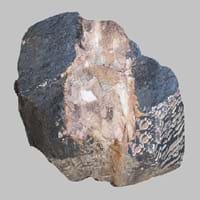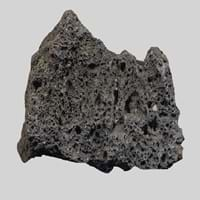Definition
Claystone is a fine-grained, dark gray to pink sedimentary rock which mainly consists of compacted and hardened clay
Scoria is a dark-colored extrusive igneous rock with abundant round bubble-like cavities
Discoverer
Unknown
Unknown
Etymology
From English clay and stone as the rock contains more amount of clay
From late Middle English (denoting slag from molten metal), from Greek skōria refuse, from skōr dung
Class
Sedimentary Rocks
Igneous Rocks
Sub-Class
Durable Rock, Medium Hardness Rock
Durable Rock, Medium Hardness Rock
Group
Not Applicable
Volcanic
Other Categories
Fine Grained Rock, Opaque Rock
Fine Grained Rock, Opaque Rock
Texture
Clastic
Vesicular
Color
Black, Blue, Brown, Green, Grey, Orange, Red, White, Yellow
Black, Brown, Dark Grey to Black, Red
Durability
Durable
Durable
Scratch Resistant
Yes
Yes
Appearance
Rough and Dull
Glassy and Vesicular
Interior Uses
Decorative Aggregates, Entryways, Floor Tiles, Homes, Interior Decoration
Decorative Aggregates, Interior Decoration
Exterior Uses
As Facing Stone, Roof Tiles
Garden Decoration, Paving Stone
Other Architectural Uses
Curbing
Curbing
Construction Industry
As a Sintering Agent in Steel Industry to process Iron Ore, Cement Manufacture, Construction Aggregate, for Road Aggregate, Making natural cement, Raw material for the manufacture of mortar
Cement Manufacture, Construction Aggregate, for Road Aggregate, In landscaping and drainage works
Medical Industry
Not Yet Used
Not Yet Used
Antiquity Uses
Artifacts, Sculpture, Small Figurines
Artifacts, Monuments, Sculpture
Commercial Uses
Pottery
As a traction material on snow-covered roads, Creating Artwork, High-temperature insulation, In gas barbecue grills
Types
Not Available
Not Available
Features
Available in Lots of Colors and Patterns, Smooth to touch, Very fine grained rock
Available in Lots of Colors and Patterns, Generally rough to touch, Surfaces are often shiny
Archaeological Significance
Monuments
Not Yet Used
Used
Famous Monuments
Not Applicable
Data Not Available
Famous Sculptures
Data Not Available
Data Not Available
Formation
Claystone is generally quite soft, but can be hard and brittle. It forms due to weathering of mudstone.
Scoria forms when magma containing huge amount of dissolved gas flows from a volcano during an eruption.
Mineral Content
Biotite, Chlorite, Feldspar, Micas, Muscovite or Illite, Plagioclase, Pyrite, Quartz
Apatite, Biotite, Calcite, Feldspar, Hematite, Hornblade, Ilmenite, Magnetite, Olivine, Pyroxene, Quartz, Silica
Compound Content
Aluminium Oxide, Ca, NaCl, CaO, Iron(III) Oxide, MgO, Silicon Dioxide
Ca, NaCl
Types of Metamorphism
Not Applicable
Burial Metamorphism, Cataclastic Metamorphism, Contact Metamorphism
Types of Weathering
Biological Weathering, Chemical Weathering, Mechanical Weathering
Biological Weathering, Chemical Weathering, Mechanical Weathering
Types of Erosion
Coastal Erosion, Water Erosion
Chemical Erosion, Coastal Erosion, Glacier Erosion
Grain Size
Fine Grained
Fine Grained
Fracture
Not Available
Conchoidal
Porosity
Very Less Porous
Highly Porous
Luster
Dull
Subvitreous to Dull
Specific Gravity
0
Not Available
Transparency
Opaque
Opaque
Density
2-2.9 g/cm3
Not Available
Specific Heat Capacity
Not Available
Resistance
Heat Resistant, Impact Resistant
Heat Resistant, Impact Resistant, Pressure Resistant, Wear Resistant
Deposits in Eastern Continents
Asia
Bangladesh, China, India, Russia
Afghanistan, Indonesia, Japan, Russia
Africa
Ethiopia, Kenya, Morocco, South Africa, Tanzania
Ethiopia, Kenya, Tanzania
Europe
Austria, France, Germany, Greece, Italy, Romania, Scotland, Spain, Switzerland
Greece, Hungary, Iceland, Italy, Turkey
Others
Not Yet Found
Not Yet Found
Deposits in Western Continents
North America
Canada, Panama, USA
Bahamas, Barbados, Canada, Costa Rica, Cuba, Jamaica, Mexico, USA
South America
Bolivia, Chile, Colombia, Ecuador, Peru, Venezuela
Argentina, Chile, Ecuador, Peru
Deposits in Oceania Continent
Australia
New South Wales, New Zealand, Queensland, Victoria, Western Australia
New Zealand, Western Australia










